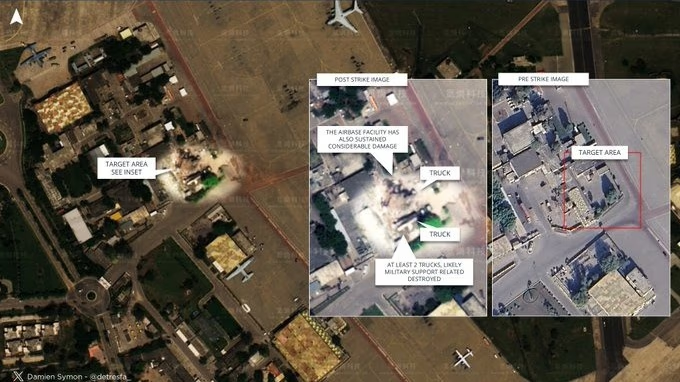Recent operations like 'Operation Sindhurakshak' have showcased the might of BrahMos-1. With the advent of BrahMos-2 and HGV, India's military prowess will multiply manifold. These weapons are not merely technological marvels but also symbolize India's strategic confidence and cultural heritage, drawing inspiration from ancient 'Brahmastras.' In the coming years, these weapons will not only daunt Pakistan and China but also position India as a global military power.
1. Hypersonic Glide Vehicle (HGV): The Future of Warfare
The Hypersonic Glide Vehicle (HGV) is an advanced technology capable of flying at hypersonic speeds (over Mach 5, five times the speed of sound) while evading radar and precisely hitting targets. India's Hypersonic Technology Demonstrator Vehicle (HSTDV), developed by DRDO, marks a significant step in this direction.
Read More:
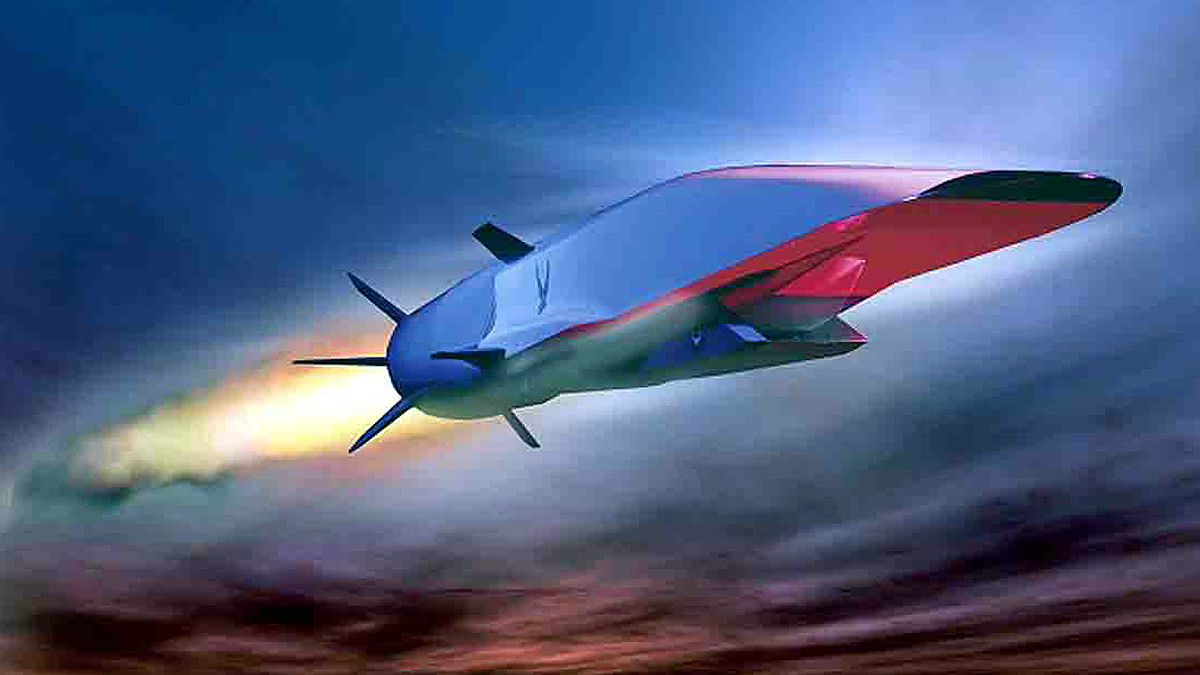
Source: aajtak
Features
Speed: The HSTDV can achieve speeds from Mach 6 to Mach 12 (around 7,400-14,800 km/h), leaving the enemy with almost no reaction time.
Range: Capable of covering distances between 1,500-2,000 kilometers, it can target vast regions of Pakistan and China.
Guidance and Maneuverability: Unlike traditional ballistic missiles, the HGV does not follow a fixed trajectory. It can alter course in-flight, making interception nearly impossible.
Payload: It can carry both conventional and nuclear warheads, suitable for both strategic and tactical roles.
Scramjet Engine: Based on Supersonic Combustion Ramjet technology, the HSTDV can travel long distances at hypersonic speeds.
Development Status
DRDO conducted the first successful test of the HSTDV in September 2020, with the scramjet engine achieving Mach 6. By November 2024, several more tests were conducted to enhance hypersonic speed and maneuverability. There is a plan for full operational integration into missiles and drones in the next 2-3 years.
Read More:
Threat to Pakistan and China
Pakistan:
The speed and range of the HSTDV enable it to target cities like Lahore (30-40 seconds), Islamabad (2-3 minutes), and Karachi (3-4 minutes) swiftly. Its radar-evading capability renders Pakistan's air defense systems like HQ-9 and FM-90 ineffective.
China:
With its range and maneuverability, the HSTDV can target Beijing, Shanghai, and Chinese naval bases in the South China Sea. Even China's S-400 and HQ-9 systems struggle to track it.
Strategic Impact:
Deploying the HGV will grant India an edge in both preemptive and retaliatory strikes, profoundly impacting the strategies of Pakistan and China.
2. BrahMos-2: Dawn of Hypersonic Cruise Missiles
BrahMos-2, developed by BrahMos Aerospace—a joint venture between India and Russia—is an advanced version of the existing BrahMos-1 missile. With its speed, range, and stealth capabilities, it aims to be the world’s fastest and most lethal cruise missile.
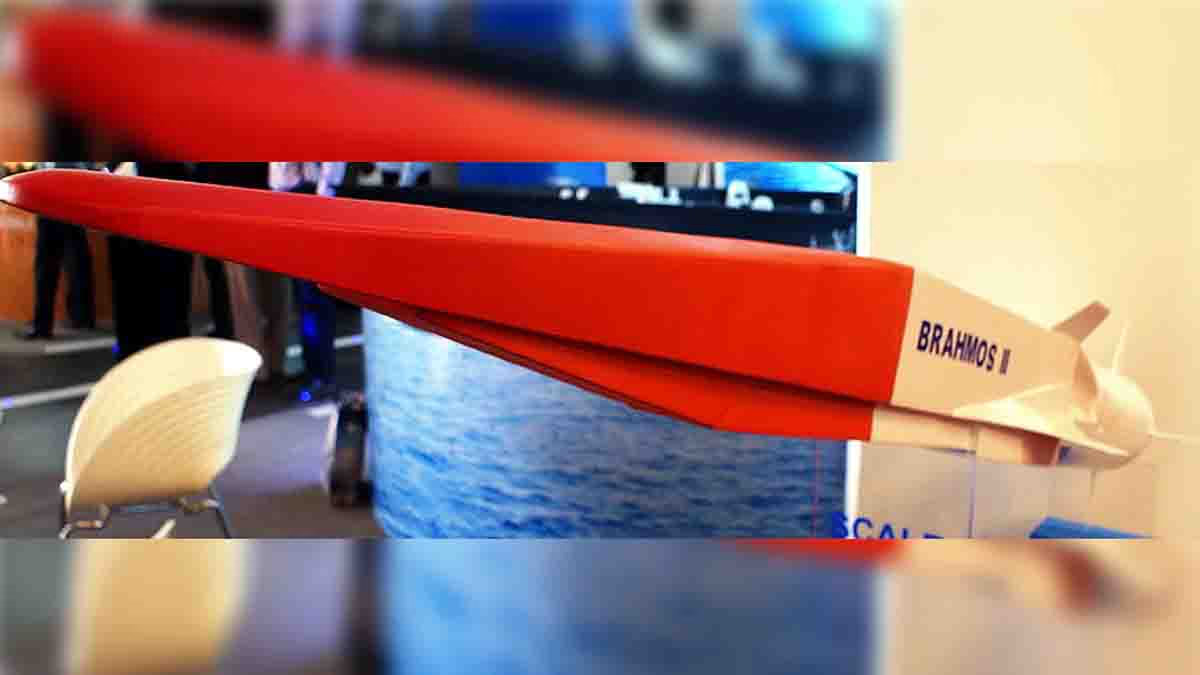
Source: aajtak
Features
Speed: Capable of flying at speeds from Mach 7-8 (around 8,600-9,800 km/h), making it twice as fast as BrahMos-1 (Mach 2.8-3.0).
Range: With a range extending up to 1,500 kilometers, it provides India the capability to strike deep into Pakistani and Chinese territories.
Launch Platforms: It can be launched from land, sea, submarine, and air (from fighter jets like Sukhoi Su-30MKI).
Stealth and Maneuverability: Advanced stealth technology and maneuvering ability aid in evading enemy radar and missile defense systems.
Payload: Can carry conventional or nuclear warheads weighing 200-300 kilograms, suitable for surgical strikes and large-scale attacks.
Development Status
The design of BrahMos-2 was completed by 2011, with prototype development starting in 2012. In April 2025, a successful test in the Bay of Bengal achieved an 800-kilometer range.
Another test is scheduled for November 2025, aiming to further enhance stealth and precision. The missile is expected to be integrated into the Indian Army, Navy, and Air Force between 2027-2028.
Read More:
Threat to Pakistan and China
Pakistan:
BrahMos-2’s hypersonic speed allows it to demolish key Pakistani military bases like Murree, Rawalpindi, and Gwadar in seconds. Its stealth capability nullifies Pakistan's radar systems (HQ-9 and FM-90).
China:
The 1,500-kilometer range enables BrahMos-2 to target Chinese bases in the South China Sea and Tibet. It also poses a threat to Chinese navy ships and aircraft carriers.
Strategic Impact:
By deploying the BrahMos-2, India gains superiority over maritime and land fronts, challenging China's aggressive maritime activities and Pakistan’s cross-border terrorism strategies.
3. Directed Energy Weapons (DEW)
Directed Energy Weapons (DEW) are advanced systems using electromagnetic energy (like lasers, microwaves, or particle beams) to destroy targets. These weapons, due to their speed, precision, and cost-effectiveness, can revolutionize future battlefields. In India, DRDO is actively working in this field.
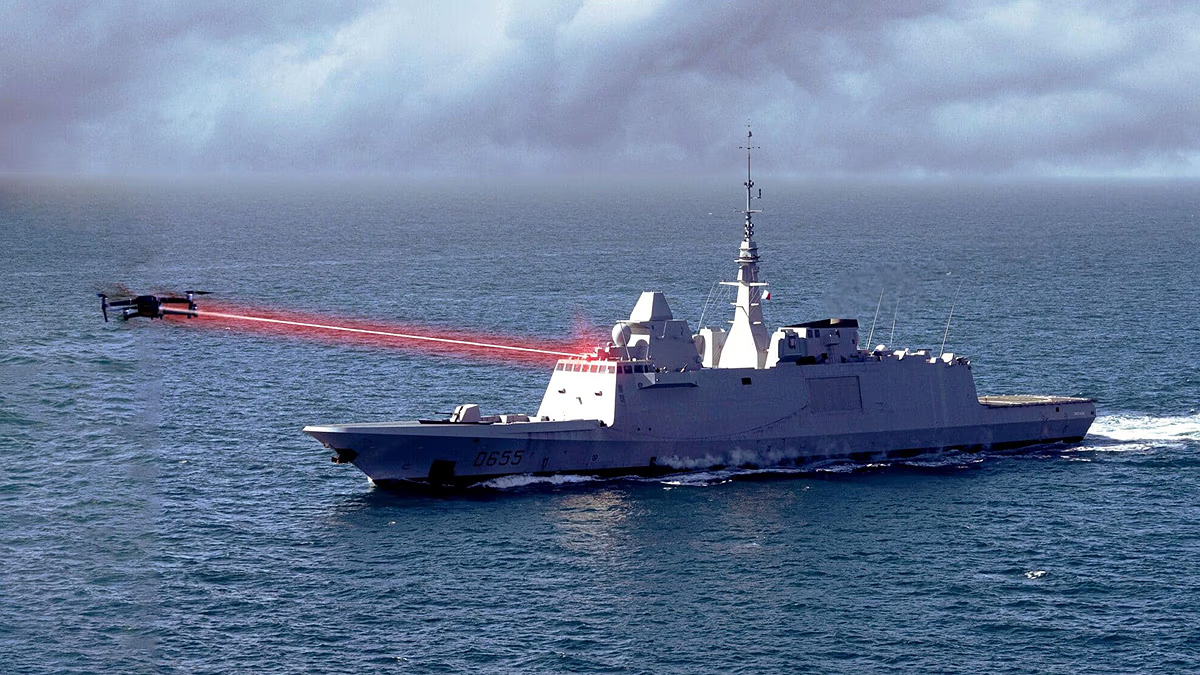
Source: aajtak
Features
Types: Mainly includes laser-based weapons (High-Energy Lasers - HEL) and High-Power Microwave (HPM) weapons.
Speed: Attacks at the speed of light, giving the target no time to escape.
Targets: Capable of destroying drones, missiles, aircraft, and small naval vessels.
Range: Initial models have a range of 2-10 kilometers, with potential for future extension.
Cost-Effectiveness: Per-shot cost is significantly lower compared to traditional missiles.
Development Status
DRDO began initial trials of laser-based DEW in 2018. Demonstrations of 2 kW and 10 kW laser systems occurred in 2020.
Laser Dazzler: Developed on a small scale by DRDO, capable of blinding enemy sensors and optics.
Vehicle-Mounted DEW: In 2022, DRDO tested a 10 kW laser capable of destroying drones 1.5 km away.
Naval and Air Use: Plans to integrate DEWs into naval ships and air defense systems by 2024 are underway.
By November 2025, DRDO is working on 25 kW and 50 kW laser systems capable of targeting missiles and fighter planes.
Read More:
Strategic Importance
Drone and Missile Defense:
DEWs can quickly neutralize low-cost threats like drones and cruise missiles, integral to the strategies of countries like Pakistan and China.
Threat to Pakistan and China:
Deploying DEWs will increase India's capability to thwart enemy air attacks and drone intrusions at its borders.
Cost and Efficiency:
DEW systems are cost-efficient over time compared to traditional arms.
Challenges
Energy Source:
High energy levels required to operate DEWs demand advanced batteries and power generators.
Weather Limitations:
Fog, rain, and dust can reduce laser effectiveness.
Scaling:
Large-scale deployment still faces technological and financial hurdles.
Future:
DRDO plans to develop 100 kW laser systems by 2030, capable of ballistic missile destruction, placing India among leading DEW technology countries like the USA, Russia, and China.
4. Naval Ship-borne Drones
The Indian Navy has taken significant strides in integrating drone technology into its naval ships in recent years. These drones are used for surveillance, reconnaissance, and precision strikes, enhancing the Navy's tactical and strategic capabilities.
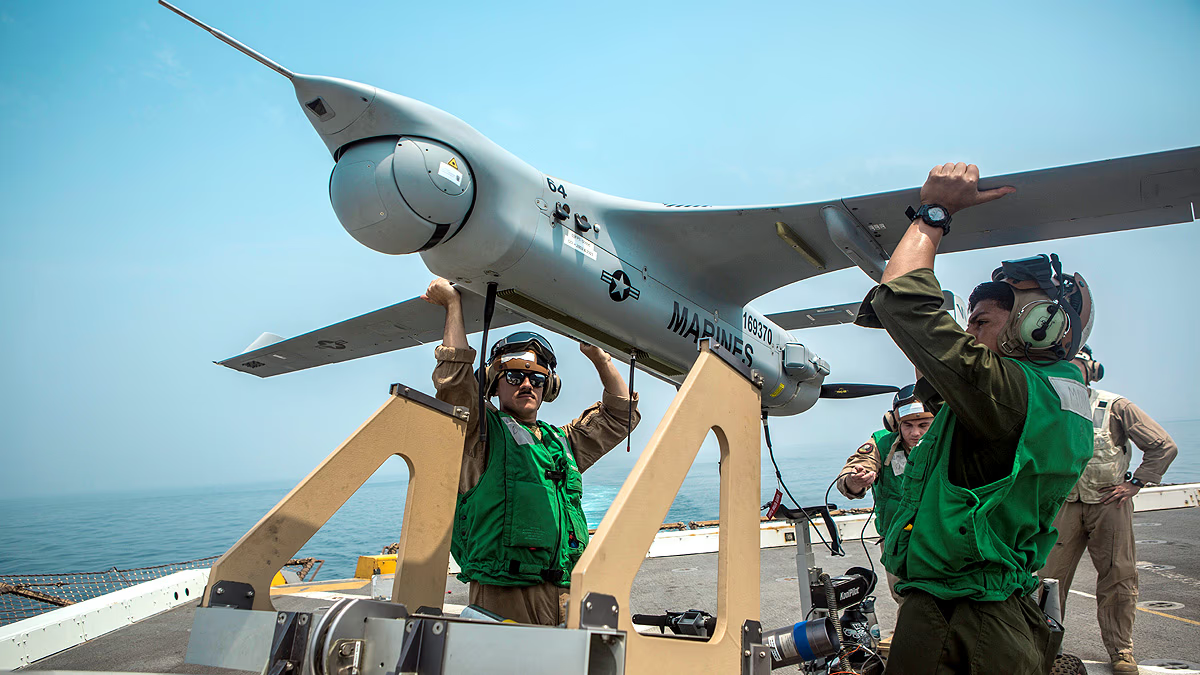
Source: aajtak
Features
Types:
The Indian Navy employs various drones, including Heron Mark 2 (procured from Israel), Sea Guardian MQ-9B (leased from the USA), and indigenous Dristi drones.
Capabilities
Surveillance and Reconnaissance: Drones can fly for 36-45 hours and provide real-time imagery from altitudes of 35,000 feet.
Strike: Heron Mark 2 and Sea Guardian can carry laser-guided bombs, air-to-ground missiles, and anti-tank missiles.
Communication: Satellite-based communication systems keep drones connected to ground stations.
Platform: Drones can be operated from INS Vikrant, INS Visakhapatnam, and other warships.
Indigenous Drones: DRDO and private companies (like Tata and Adani) are developing indigenous drones like TAPAS-BH (Tactical Airborne Platform for Aerial Surveillance-Beyond Horizon).
Development and Deployment
Heron Mark 2:
Deployed in Ladakh during the 2020 India-China border dispute. The drones are now used for surveillance in the Indian Ocean from naval ships.
Sea Guardian MQ-9B:
In 2020, India leased two drones from the USA, operated from INS Rajali (Arakkonam), monitoring Chinese and Pakistani naval activities in the Indian Ocean.
TAPAS-BH:
DRDO's indigenous drone, successfully tested in 2023, aimed for naval induction by 2026.
INS Anvesh:
DRDO's floating test range ship utilized for drone and missile tests, aiding in naval drone operations.
Read More:
Strategic Importance
Indian Ocean Surveillance:
Drones monitor strategic locations like Gwadar (Pakistan) and Djibouti (China's military base).
Threat to Pakistan and China:
Drones provide precision strikes and real-time intelligence, giving the Indian Navy an edge in maritime warfare.
Anti-Submarine Warfare:
Drones aid in detecting and destroying submarines, posing a threat to Chinese and Pakistani navies.
Challenges
Limited range and payload capacity of indigenous drones. Need for trained personnel to operate drones. Cybersecurity: Protecting drone communication systems from hacking.
Future:
India plans to procure 30 Sea Guardian drones and deploy indigenous drones like TAPAS-BH on a large scale by 2030. Drone decks and autonomous operation systems are being developed for naval ships.
5. Light Tanks (Zorawar)
Zorawar, India's indigenous light tank, has been developed jointly by DRDO and Larsen & Toubro (L&T). It is specially designed for deployment in high-altitude areas like Eastern Ladakh, where the mobility of traditional heavy tanks (like the T-90) is limited.
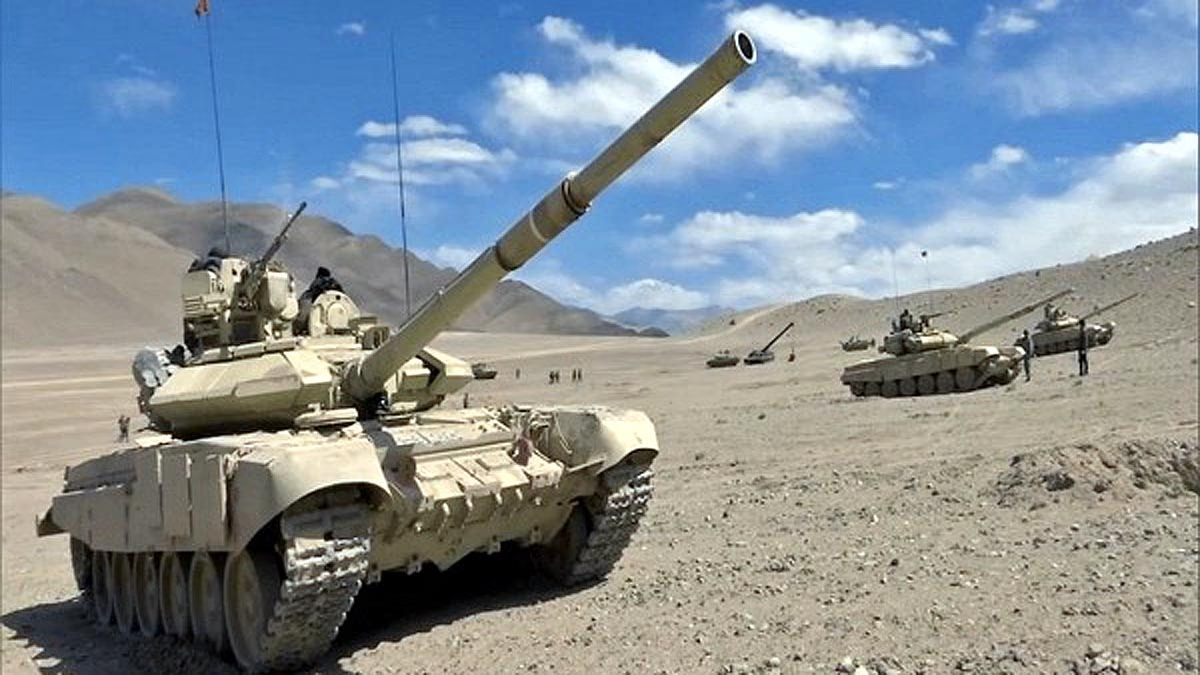
Source: aajtak
Features
Weight: 25 tons, making it light and air-transportable.
Speed: Capable of speeds of 50-60 km/h and rapid operation in mountainous terrains.
Armaments: 105 mm main gun, remote-controlled machine gun, and anti-tank guided missile (ATGM).
Protection: Equipped with Active Protection System (APS) capable of destroying incoming missiles and projectiles.
Environmental Adaptability: Capable of operating in water (like Pangong Tso Lake) and functionality down to -40°C.
Development Status
Following the 2020 India-China standoff, the Indian Army expressed the need for 350 light tanks. The first prototype of Zorawar was ready in 2023. Testing began in December 2024 in Nyoma, Ladakh, demonstrating success in firepower, mobility, and protection systems. Testing is expected to complete by the end of 2025, with army induction by 2026. The Defense Acquisition Council has approved an order for 59 tanks.
Read More:
6. Indian Multi-Role Helicopter: India's Indigenous Flight Power
The Indian Multi-Role Helicopter (IMRH) signifies a significant step towards indigenization and self-reliance in India's defense sector. Developed by Hindustan Aeronautics Limited (HAL), it's designed to meet the diverse needs of the Indian Army, Navy, and Air Force.
The goal of the IMRH is to reduce dependence on foreign helicopters and ensure effective operations in high-altitude regions, maritime missions, and combat scenarios. This helicopter will be known for its versatility, advanced technology, and robust design.
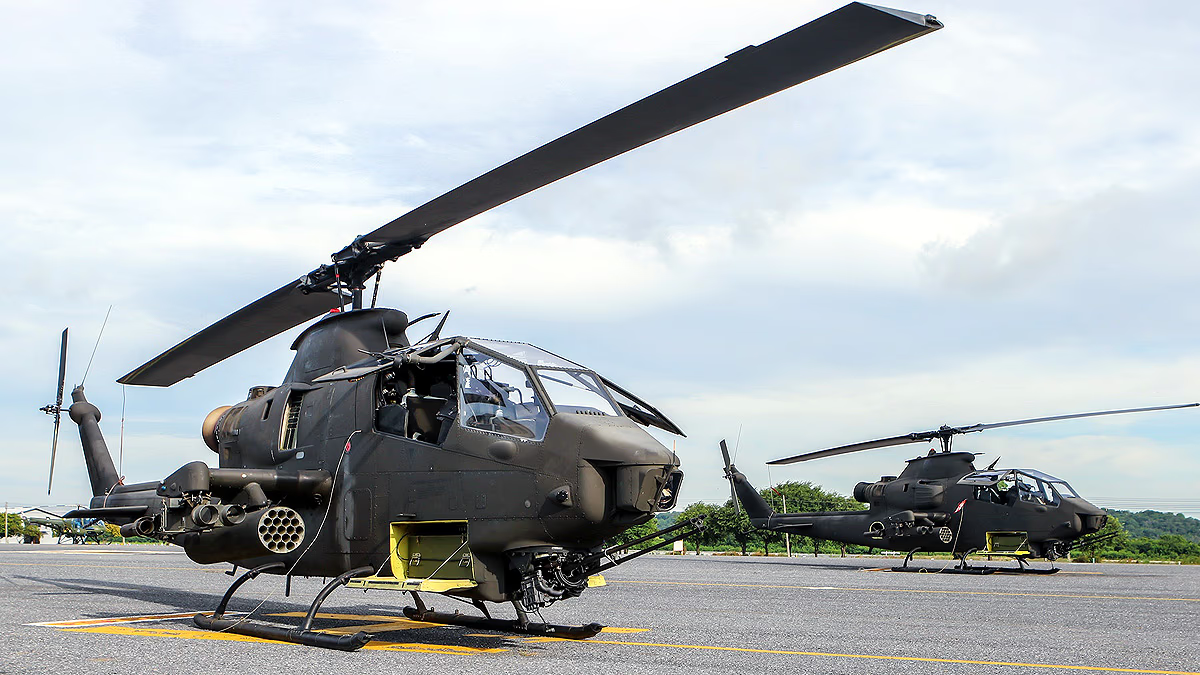
Source: aajtak
Weight and Capacity
Takeoff Weight:
Approximately 13 tons (medium-category helicopter).
Payload:
3.5-4 tons, accommodating troops, weapons, or cargo.
Troop Transport:
Capacity to carry 24-30 soldiers or 12 stretchers for medical evacuation.
Engine and Performance
Engine:
Two turboshaft engines, potentially AL-31F or Shakti engines (an advanced version of the AL-20R used in HAL's Dhruv helicopter).
Speed:
Maximum speed of 260-280 km/h.
Range:
Approximately 700-1,000 kilometers, with additional range using external fuel tanks.
Altitude:
Capable of operations up to 6,500 meters, suitable for high-altitude areas like Ladakh.
Armament and Technology
Armament: 20 mm cannon, rocket pods, anti-tank guided missiles (ATGM like Helina/NAG), and air-to-air missiles.
Avionics: Advanced glass cockpit, night-vision systems, and multi-function displays.
Sensors: Electro-Optical/Infrared (EO/IR) sensors, radar warning receivers, and missile warning systems.
Autonomy: Potential for drone-like autonomous operations, enhancing future lethality.
Military: Troop transport, armed assault, search and rescue, medical evacuation, and command-control missions.
Naval: Anti-submarine warfare (ASW), anti-ship warfare (ASuW), and maritime surveillance.
Air Force: Tactical air support and special operations.
Non-Military: Disaster relief, VIP transport, and coast guard missions.
Design:
Sturdy and modular design allows quick configuration for various missions. Foldable blades and tail rotor deem it suitable for deployment on naval ships (like INS Vikrant).




